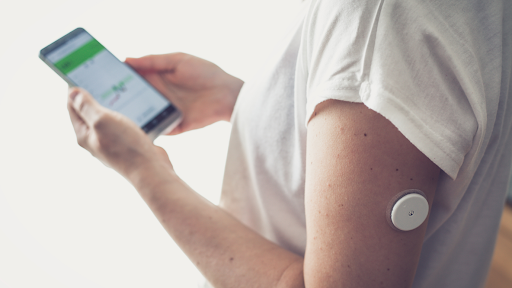Management for Type 2 Diabetes includes:
The most important principle in the management of Type 2 Diabetes is lifestyle modification which includes healthy eating, regular exercise and weight loss if you are overweight. Additional management with diabetes medications and blood glucose monitoring are often also necessary.
Adopt a healthy diet
In a healthy eating plan, choose a variety of foods that are rich in nutrients and fibre and low in fat and calories. Carbohydrates when digested, are broken down into glucose (sugar) in the blood. Although glucose is the main energy source for the brain and body, excess intake of carbohydrates leads to weight gain.
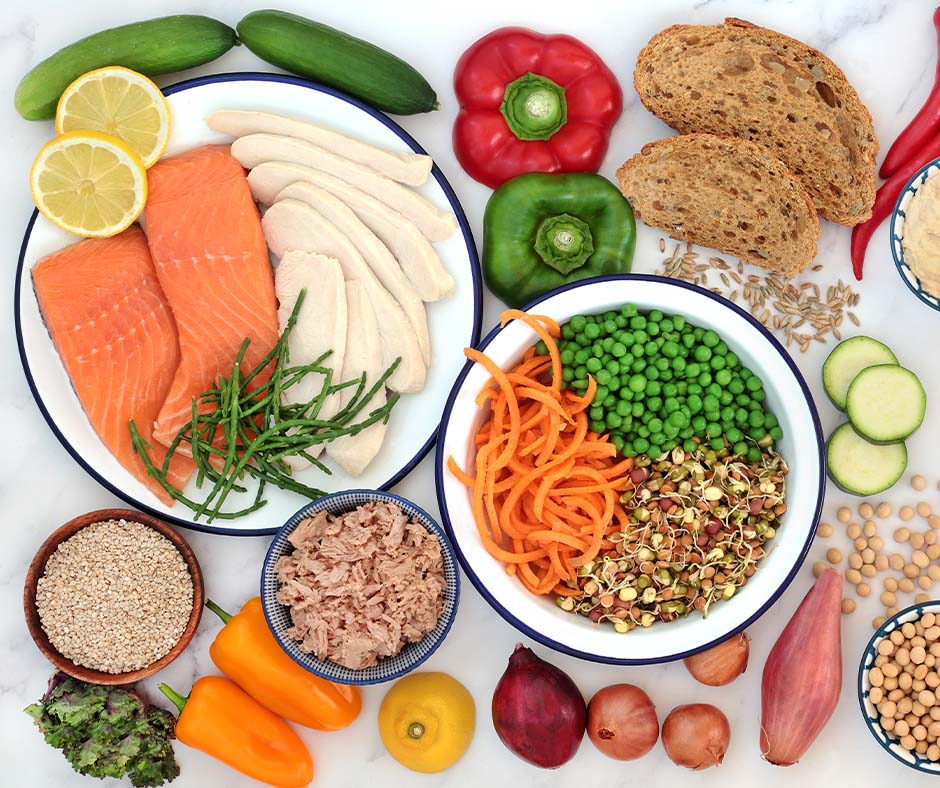
A diabetes diet is essentially a healthy diet: regular, balanced meals in moderate portions, with more wholegrains, lean proteins, fruits, and vegetables, and less sugar, fat, and salt.
Carbohydrate food sources include starches (e.g. rice, noodle, bread, pasta, potato, oats, chapati, biscuits etc), all fruits, starchy vegetables (e.g. corn, tapioca, yam), beans and lentils, milk and yoghurt and sugar and sweets (e.g honey, brown sugar, sweetened drinks, desserts etc). Healthier carbohydrates include whole grains (brown rice, whole-meal bread, oats, chapati etc), legumes such as beans and peas, vegetables and fruits. Reduce consumption of refined or simple carbohydrates which release glucose rapidly into the bloodstream.
Consuming more fibre-rich foods helps to slow down the rate at which glucose is being released into the bloodstream, keeps you full and improves bowel function. Vegetables, fruits, nuts, legunes and whole grains are some foods that are high in fibre. Remember 2+2 – include 2 servings of fruits + 2 servings of vegetables daily.
Eat at regular timings and portion control are methods to limit the amount of calories consumed in a day. Reduce the intake of foods that are high in fat, especially saturated fat (butter, ghee, lard and fat/skin on meat) and trans fat (e.g. processed foods, fried food, cakes, pastries, shortening and partially hydrogenated vegetable oil) as they increase the levels of bad cholesterol in the body which is associated with a higher risk of heart disease and stroke. Heart-healthy fats are foods that are higher in omega-3 fatty acids (e.g. fish such as salmon, mackerel, tuna), monounsaturated and polyunsaturated fats (e.g. avocados, nuts etc). However, as in all things in life, moderation is key as all fats are high in calories and can lead to weight gain when taken in excess of your requirements.
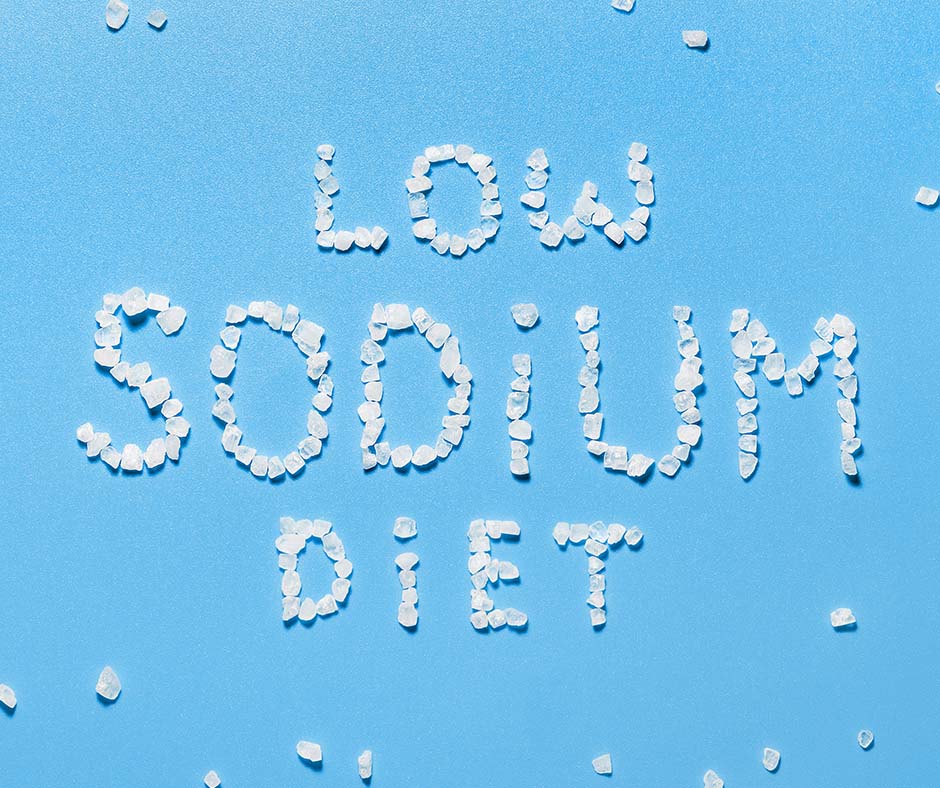
Lowering salt intake is a simple step to reduce heart risks in diabetes and hypertension.
It is also important to limit salt intake in your diet as diabetes is often associated with hypertension (high blood pressure) and a high salt intake is associated with hypertension. You can limit salt intake by adding less salt and sauces during cooking, reducing the intake of processed foods and to cut down on gravy when eating out. Use natural herbs and spices (e.g. ginger, lemon, pepper, herbs) to flavour your food instead of adding salt.
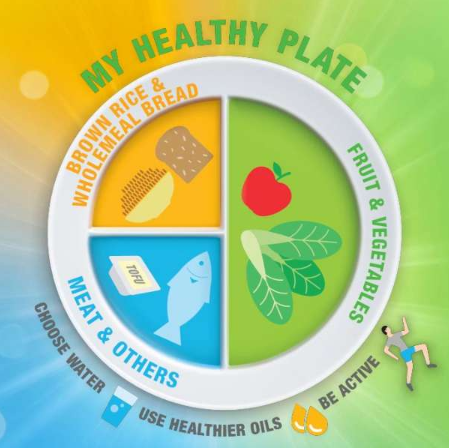
My Healthy Plate is a visual guide to healthier eating – fill quarter of the plate with wholegrains, another quarter plate with good sources of protein (fish, lean meat, eggs, plant-based proteins like soy milk, tofu, tempeh, nuts, beans and legumes) and fill half the plate with vegetables and fruits. Make water your drink of choice and eliminate sugar-sweetened beverages.
Weight loss if overweight
As being overweight or obese is a major risk factor for developing Type 2 Diabetes, modest weight loss (in the range of 5 – 10% of your current body weight) improves blood glucose levels and lowers the risk of developing heart disease and stroke. Achieving and maintaining long-term weight loss takes effort and time. Inner motivation is key as weight loss can be achieved through lifestyle measures (healthy meal plans, physical activity) alone, or in combination with weight loss medications. Surgical methods of weight loss through metabolic surgery may also be a consideration.
Make an appointment with Aspen Diabetes and Endocrine clinic for help in your Type 2 Diabetes and weight loss journey. Access our personalized care plans to help you achieve your weight loss goals.
Medications for Type 2 Diabetes.
Medications may be needed to keep blood glucose levels at a healthy level. Several classes of Type 2 Diabetes medications exists and each class of medicine works in different ways to lower blood glucose levels. Medications work to lower blood glucose levels by the following methods and some medications may have a combination of effects:
- Improve the body’s sensitivity to insulin
- Trigger the pancreas to release more insulin into the bloodstream
- Limit the kidney’s ability to reabsorb (take in) glucose which increases the amount of glucose excreted (passed out) in the urine
- Limit the liver’s ability to make and release glucose
- Slow down the transit of food through the stomach and/or intestines
- Block the action of enzymes in the intestines to break down carbohydrates.
Some of these medications may be in tablet form and others may be taken as an injection. Sometimes one medication is not enough and taking several medications may be needed to not only control blood glucose levels, but to reduce the risk of progression of other complications of diabetes such as kidney and heart complications. Speak to your doctor to understand the pros and cons of the different types of medications and what would be most suitable for you.
Blood glucose monitoring in Type 2 Diabetes
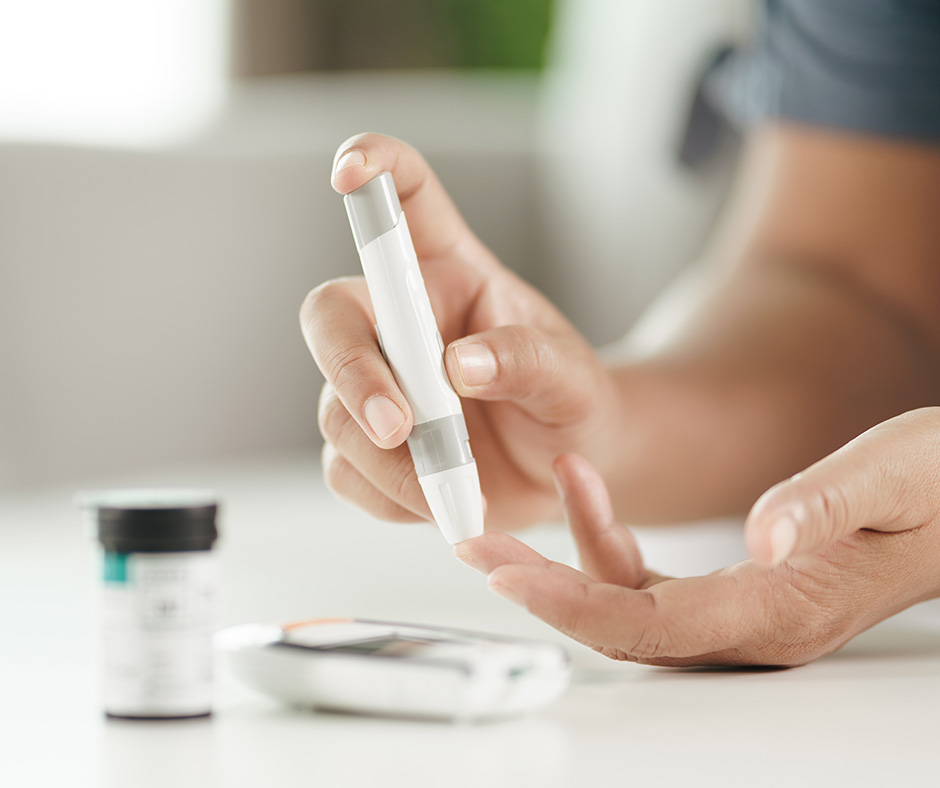
Regular monitoring shows how diet, activity, and medication influence blood sugar, supporting better diabetes management.
Blood glucose testing is an important tool to increase your self-awareness of your blood glucose patterns (both highs and lows) and how blood glucose is affected by diet, exercise, illness or stress. Testing your blood glucose also allows you to monitor the effect of diabetes medications on blood glucose levels and track your progress in achieving your target blood glucose levels. The frequency of blood glucose testing in Type 2 Diabetes will depend on the type of medications that you use (oral tablets vs. insulin injections).
Methods of blood glucose testing include:
a) Finger-prick blood glucose tests using a blood glucose meter and test strips – this is the most common method of glucose monitoring and provides glucose data at specific time points. Some blood glucose meters are now connected with mobile health applications to store your diabetes data which removes the need for manual recording of blood glucose levels.
b) Continuous glucose monitoring (CGM) – CGM systems measure glucose in the interstitial fluid as frequently as every 5-15 minutes. This system uses a sensor placed over the abdomen or upper arm to provide a continuous glucose tracing to your smartphone or a connected wireless handheld device, for a detailed look at glucose levels.
Advantages of such a system is the convenient ability to test blood glucose levels without pricking your finger, greater visibility of glucose trends and data at different time points which allow a greater understanding of how food, physical activity, medications, stress and sleep impact on blood glucose levels and insight into overnight glucose levels which may otherwise be unknown. Another valuable aspect of CGM is that alarms can be set to alert the user to low and high blood glucose levels. Data can also be shared with a caregiver and/or healthcare provider.
